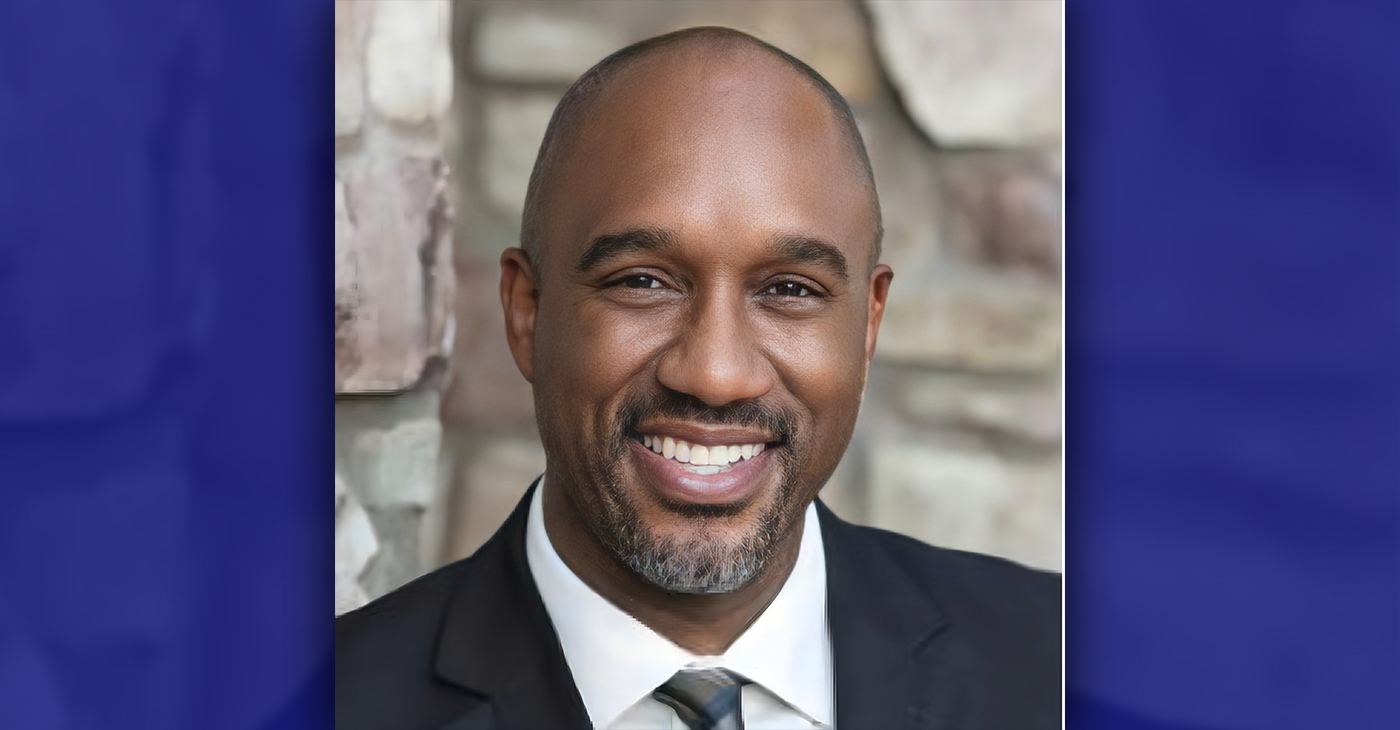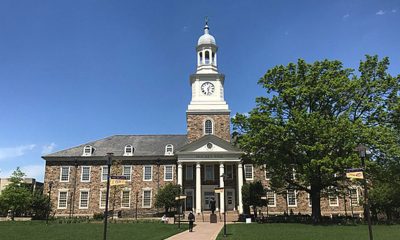Bay Area
Remembering Kenneth Brown, Educator, Engineer, and El Camino College Trustee
The El Camino Community College District, California State University Dominguez Hills, and the aerospace industry have lost a great leader and advocate with the passing of Kenneth Brown on March 23, 2023. Brown was a pioneer in his fields, and his work as an educator, scientist, engineer, and trustee impacted countless lives.

By Joe W. Bowers Jr.
California Black Media
The El Camino Community College District, California State University Dominguez Hills, and the aerospace industry have lost a great leader and advocate with the passing of Kenneth Brown on March 23, 2023.
Brown was a pioneer in his fields, and his work as an educator, scientist, engineer, and trustee impacted countless lives.
Born and raised in Carson, CA, Brown attended Morehouse College in Atlanta, where he earned a B.S. in Computer Science and a B.S. in Physics. He later went on to earn his M.S. in Applied Physics from Clark Atlanta University.
“As a Morehouse alum, Ken upheld the tradition of striving to make a positive difference in the world, especially for the Black community. He had a keen analytical mind and he eagerly engaged in discussions in a variety of subjects, including politics and social issues that challenged you to think critically,” said Los Angeles Superior Court Judge Rupert Byrdsong, a friend and college classmate.
Brown’s career in aerospace spanned over three decades. He worked for over 20 years at NASA’s Jet Propulsion Laboratory in Pasadena, where, as a System Engineering Analyst for the Mars Science Laboratory, he worked on some of the most groundbreaking missions in the history of space exploration.
He was last employed as Operations Manager for Northrop Grumman Missions Systems Engineering & Sciences (E&S) Maritime Land Sensors and Systems/Field Engineering, at Space Park, Redondo Beach. There he was the lead for a major new enhancement to the program, driving technical integration to meet performance and functional requirements.
In recognition of his contributions, Brown received the Black Engineer of the Year Modern Day Technology Leader Award in 2019.
Brown’s passion for teaching led him to serve as an adjunct professor of Physics at Cal State University Dominguez Hills. For more than 20 years he taught undergraduate physics, physical science, and math courses. Because of his exceptional ability to connect with his students, his dedication to teaching, and his caring nature, he had a reputation for being a devoted and well-admired instructor.
For the California Department of Education, Brown served as a Content Review Panel expert and helped author “Next Generation Science Standards,” which is being used in K-12 classrooms in over 40 states.
In addition to his work in aerospace and as an education practitioner, Brown was president of the Governing Board of Trustees at El Camino Community College in Torrance. He had been a Board member since 2010
“He never stopped advocating for students’ needs to ensure they found success in higher education, their chosen career fields, and in their personal lives. He inspired us to become extraordinary,” said Brenda Thames, Ph.D., El Camino College superintendent/president in reflecting on her connection with Brown. “He led as an unapologetic advocate for equity and the expansion of educational opportunities for all students. The legacy of his work will impact millions of students for decades to come.”
Vice President of the Board of Trustees Trisha Murakawa told The Union, El Camino College’s student paper, that she and Brown “‘were making good trouble, to truly help’ with education and equity at the statewide level and at El Camino.”
“Brown was a champion for students in everything he did …. and his legacy and commitment will empower generations of leaders to come,” Daisy Gonzales, the interim chancellor of California’s community college system, said in a statement.
Brown was elected to the California Community College Trustees Board in 2016, and in 2020 was elected to serve as president of the CCCT Board where he led the CCCT Board Financial Aid Implementation Committee as well as the Institutional Effectiveness Partnership Initiative Change Leadership Committee.
“I don’t think he had “no” in his vocabulary,” said Pam Haynes, President Emerita, CCCT Board and Los Rios Community College District Trustee. “He was unwavering in his steadfast advocacy for students of color, especially Black and Brown students within our community college system.
On a national level, Brown served on the Association of Community College Trustees Public Policy and Advocacy Committee.
Brown also served on the Da Vinci Schools Board of Trustees from 2019-20 in the Wiseburn Unified School District in El Segundo and on the Da Vinci Schools Fund Board.
A true renaissance man, Brown’s accomplishments extended beyond his professional life. He was an accomplished athlete, twice named All-American in Track & Field at Morehouse College and he played in the NCAA Div. II Basketball Final Four. He qualified for the U.S. Olympic Trials and Pan AM Games in the high jump.
Brown, 54, lived in Inglewood with his wife of 25 years, Dr. Karla Harness Brown, a teacher, counselor, and child welfare and attendance advisor for 30 years at the Inglewood Unified School District.
He is survived by two sons, Kenneth II, a Morehouse graduate who is now attending UCLA and Kaleb, a freshman at Howard University. He is also survived by his mother, Dr. Martha Brown, a retired professor of music and his mother-in-law, Gloria Armstrong, a retired Inglewood city employee. His father Keith Brown (deceased) was a probation officer.
From the outpouring of condolence messages and personalized tributes Brown’s family is receiving from the Inglewood community and beyond, it is certain that he will be deeply missed by his family, colleagues, and the countless students whose lives he touched through his work in education.
Alameda County
Seth Curry Makes Impressive Debut with the Golden State Warriors
Seth looked comfortable in his new uniform, seamlessly fitting into the Warriors’ offensive and defensive system. He finished the night with an impressive 14 points, becoming one of the team’s top scorers for the game. Seth’s points came in a variety of ways – floaters, spot-up three-pointers, mid-range jumpers, and a handful of aggressive drives that kept the Oklahoma City Thunder defense on its heels.

By Y’Anad Burrell
Tuesday night was anything but ordinary for fans in San Francisco as Seth Curry made his highly anticipated debut as a new member of the Golden State Warriors. Seth didn’t disappoint, delivering a performance that not only showcased his scoring ability but also demonstrated his added value to the team.
At 35, the 12-year NBA veteran on Monday signed a contract to play with the Warriors for the rest of the season.
Seth looked comfortable in his new uniform, seamlessly fitting into the Warriors’ offensive and defensive system. He finished the night with an impressive 14 points, becoming one of the team’s top scorers for the game. Seth’s points came in a variety of ways – floaters, spot-up three-pointers, mid-range jumpers, and a handful of aggressive drives that kept the Oklahoma City Thunder defense on its heels.
One of the most memorable moments of the evening came before Seth even scored his first points. As he checked into the game, the Chase Center erupted into applause, with fans rising to their feet to give the newest Warrior a standing ovation.
The crowd’s reaction was a testament not only to Seth’s reputation as a sharpshooter but also to the excitement he brings to the Warriors. It was clear that fans quickly embraced Seth as one of their own, eager to see what he could bring to the team’s championship aspirations.
Warriors’ superstar Steph Curry – Seth’s brother – did not play due to an injury. One could only imagine what it would be like if the Curry brothers were on the court together. Magic in the making.
Seth’s debut proved to be a turning point for the Warriors. Not only did he contribute on the scoreboard, but he also brought a sense of confidence and composure to the floor.
While their loss last night, OKC 124 – GSW 112, Seth’s impact was a game-changer and there’s more yet to come. Beyond statistics, it was clear that Seth’s presence elevated the team’s performance, giving the Warriors a new force as they look to make a deep playoff run.
Activism
Oakland Post: Week of November 26 – December 2, 2025
The printed Weekly Edition of the Oakland Post: Week of November 26 – December 2, 2025

To enlarge your view of this issue, use the slider, magnifying glass icon or full page icon in the lower right corner of the browser window.
Activism
Oakland Post: Week of November 19 – 25, 2025
The printed Weekly Edition of the Oakland Post: Week of November 19 – 25, 2025

To enlarge your view of this issue, use the slider, magnifying glass icon or full page icon in the lower right corner of the browser window.
-

 Activism3 weeks ago
Activism3 weeks agoOakland Post: Week of November 12 – 18, 2025
-

 Activism3 weeks ago
Activism3 weeks agoIN MEMORIAM: William ‘Bill’ Patterson, 94
-

 Activism3 weeks ago
Activism3 weeks agoHow Charles R. Drew University Navigated More Than $20 Million in Fed Cuts – Still Prioritizing Students and Community Health
-

 Bay Area3 weeks ago
Bay Area3 weeks agoNo Justice in the Justice System
-

 #NNPA BlackPress3 weeks ago
#NNPA BlackPress3 weeks agoThe Perfumed Hand of Hypocrisy: Trump Hosted Former Terror Suspect While America Condemns a Muslim Mayor
-

 #NNPA BlackPress2 weeks ago
#NNPA BlackPress2 weeks agoTrump’s Death Threat Rhetoric Sends Nation into Crisis
-

 #NNPA BlackPress4 weeks ago
#NNPA BlackPress4 weeks agoProtecting Pedophiles: The GOP’s Warped Crusade Against Its Own Lies
-

 #NNPA BlackPress2 weeks ago
#NNPA BlackPress2 weeks agoLewis Hamilton set to start LAST in Saturday Night’s Las Vegas Grand Prix






















































